Prostanthera rotundifolia
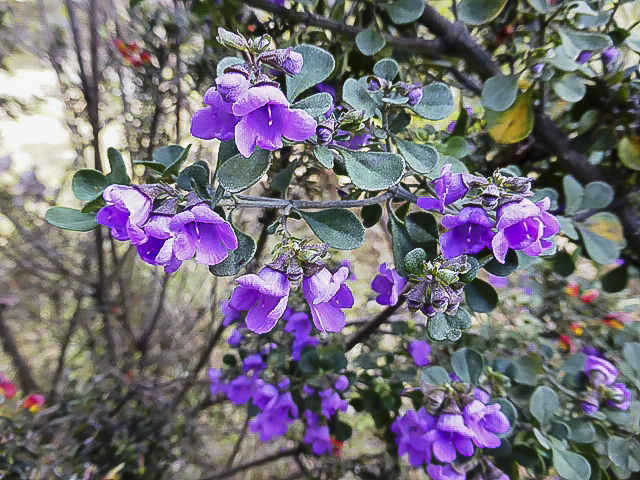
Prostanthera rotundifolia is known as the Round-leaf mint Bush and is well known in cultivation. The Round-leaf Mint Bush reaches a height of two metres in our cold climate garden. As the common name suggests the leaves are round. The foliage is very aromatic. Flowering is in spring when the plants become covered with blooms.
Prostanthera scutellarioides

Prostanthera scutellarioides grows naturally from Sydney to the Blue Mountains and north to the Queensland border. The leaves are linear, pale to mid-green, sometimes curved and up to three centimetres long. Unlike most mint bushes the foliage, of this species, has virtually no perfume.
Prostanthera striatiflora
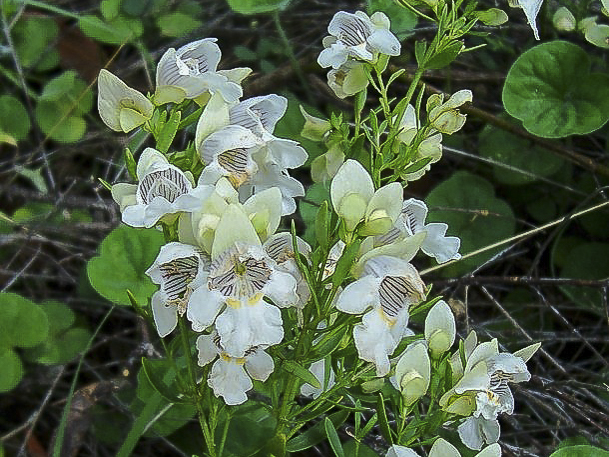
Prostanthera striatiflora is known as Jockey’s Cap. This common name refers to the shape of the flowers. This attractive Mint Bush develops into a dwarf to medium shrub with the usual aromatic foliage. Large flowers are about two centimetres across, white to cream with orange blotches on the lower lobe and purple strips in the throat. Masses of flowers are produced between August and November.
Ricinocarpos pinifolius
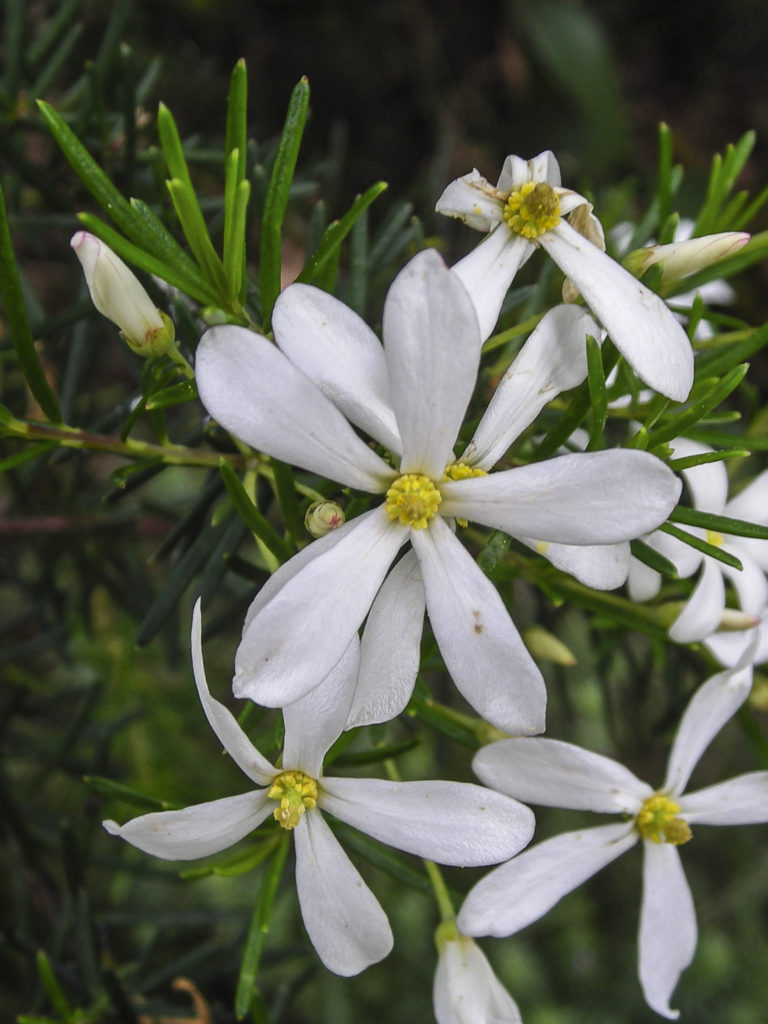
Ricinocarpos pinifolius is local to the Sydney region and should be on everyone’s ‘must have’ list for their garden. I planted this plant about 10 years ago in my garden, in the northern Sydney suburb of Westleigh and it is now approximately 2 metres high and produces flowers from September to well into December.
Sannantha crassa (syn. Baeckea virgata , syn. Babingtonia crassa)
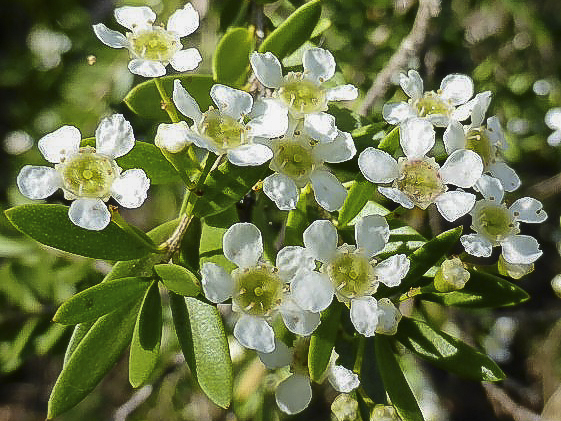
Sannantha crassa is a member of the Myrtaceae family and is a shrub that is said to reach a height of 2.5 metres. In our cold climate garden plants rarely exceed one metre in height. The branches are pendulous with aromatic, lanceolate to elliptical leaves.
Solanum aviculare

Solanum aviculare is known as the Kangaroo Apple and is a small to medium spreading shrub. In our cold climate garden plants usually reach a maximum height of three metres. The leaves may be entire or lobed, up to 30 centimetres long, deep green above and lighter green beneath. Our specimens have lobed leaves. Flowers are up to four centimetres across and an eye-catching bluish-violet with a deep violet star-shaped marking at the base and bright yellow anthers.
Senna artemisioides
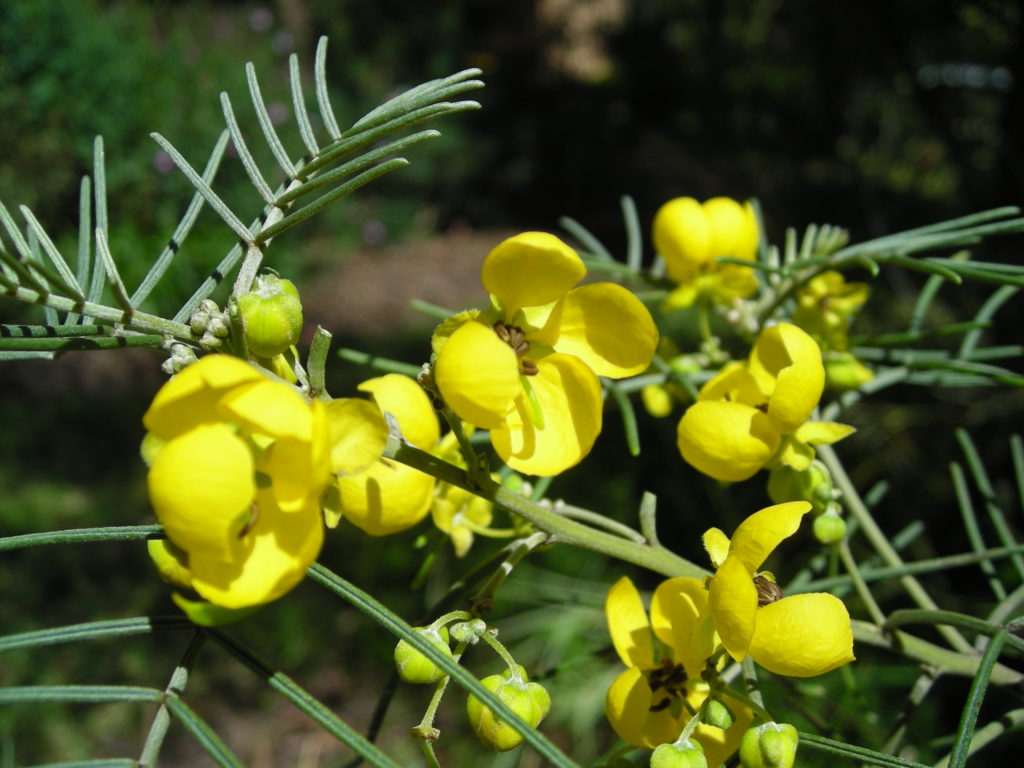
Senna artemisioides produces bright yellow flowers about 1.5 cm diameter which are borne in small clusters in the leaf axils over a long period from late Autumn/early Winter through to Spring. These are followed by brown/black pods 4-8cm long x 1cm wide.
Syzygium paniculatum (Dwarf Form)
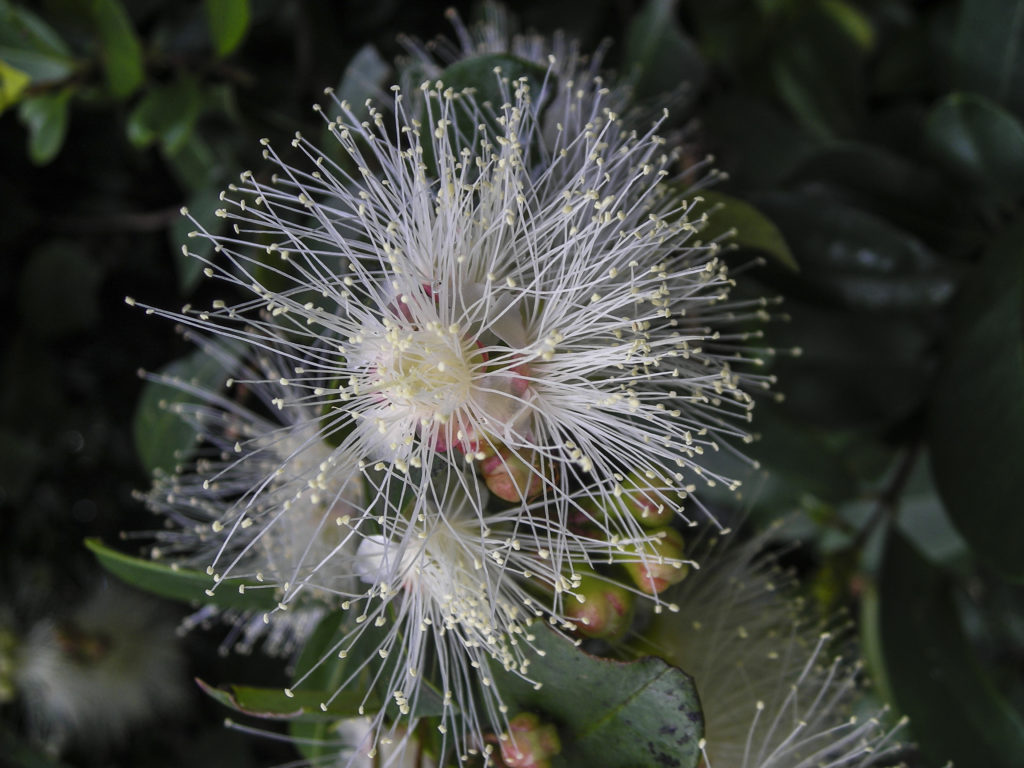
Syzygium paniculatum dwarf form is a great screening plant. It grows naturally in rainforests between Bulahdelah and Jervis Bay and is listed as a vulnerable species in the wild. Attractive white fluffy flowers appear in summer and are followed by large, fleshy, magenta-coloured fruits. These are oval in shape and around 20 mm long and contain a single seed. The fruits are edible and are often made into jams.
Thryptomene calycina
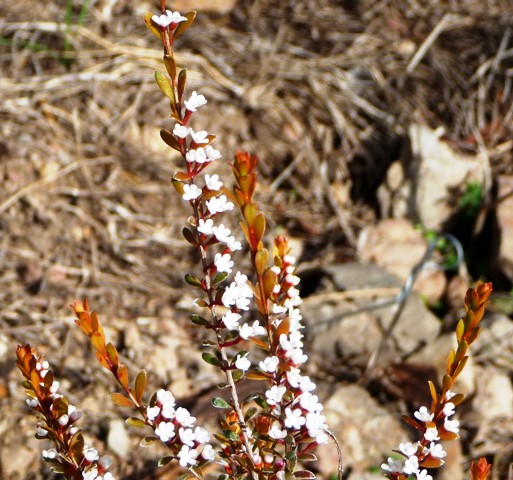
Thryptomene calycina is known as the Grampian’s Thryptomene or Grampian’s Heath-myrtle. It is a small to medium, rather bushy shrub. The small, oblong leaves are 1.5 centimetres long, 0.5 centimetres wide, deep green, aromatic and tightly clustered along the stems. Flowers are 0.5 centimetres across, white and carried in the leaf bases at the tops of stems.
Tremandra stelligera

Tremandra stelligera is a member of the Elaeocarpaceae family and is an erect or spreading shrub reaching a maximum height of two metre. Flowers are four to five petalled, 1.6 centimetres across, pink, purple or purple-blue. Blooms are solitary on hairy stalks and conspicuous particularly the purple-blue form.
Westringia eremicola
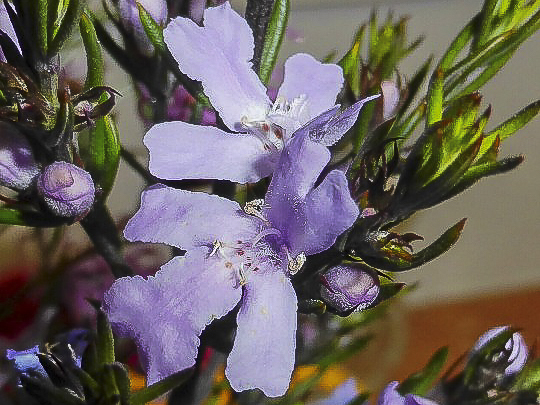
Westringia eremicola is a member of the Lamiaceae family in company with the Prostantheras and culinary mints. There are about 25 species and the genus is native to Australia. There are also many cultivars. This is a small shrub with linear, slightly prickly leaves. The leaves are carried in whorls of three around the stem. Unlike the Prostantheras, Westringias do not have aromatic foliage.
Westringia ‘Glabra Cadabra’
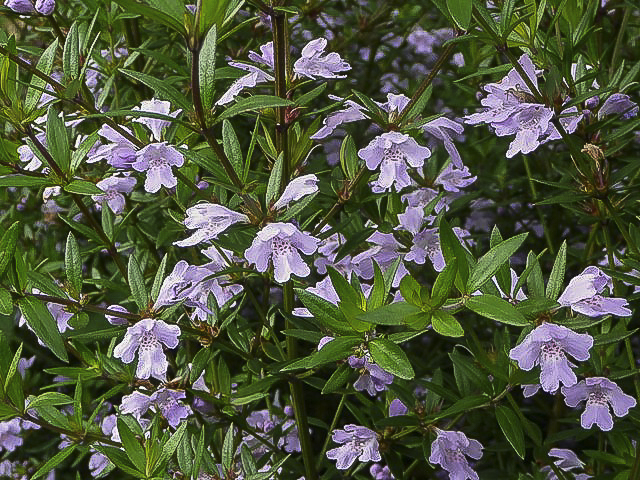
Westringia ‘Glabra Cadabra’ is a hybrid which develops into a dense shrub about 1.5 metres high by the same width. The leaves are glossy and held in whorls of four around the stems. Violet flowers are carried in clusters for many months. In our cold climate garden, specimens are seldom without flowers. Both foliage and flowers are attractive features.
Westringia ‘Poorinda Pavane’

Westringia ‘Poorinda Pavane’ is a spreading shrub that reaches a height of 2 metres in our garden. Leaves are in whorls of four, up to two centimetres long, mid green above and white-hairy beneath. The foliage is dense and provides safe nesting sites for small native birds.
Westringia longifolia
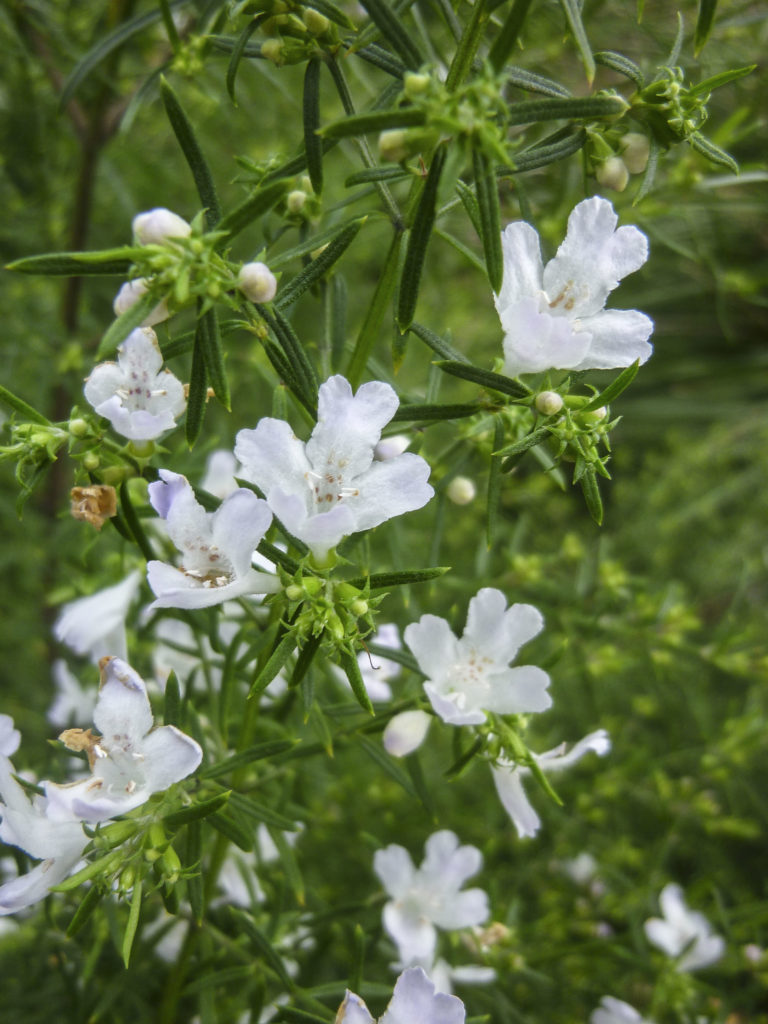
Westringia longifolia is an open, upright shrub that reaches a height of two metres in our cold climate garden. Leaves are bright green, linear and about three centimetres long. In typical Westringia fashion leaves are held in whorls of three.
Westringia ‘Wynyabbie Gem’
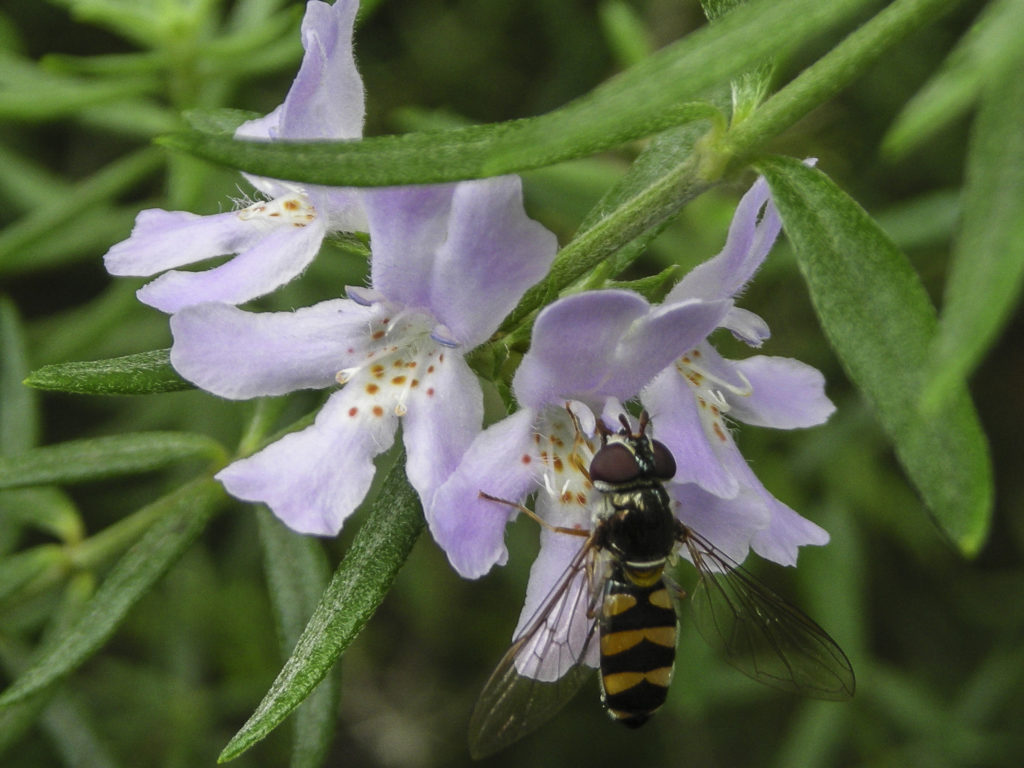
Westringia ‘Wynyabbie Gem’ is a hybrid which arose in cultivation at Wynyabbie Nursery, Jindalee, Queensland. The cultivar name is derived from the nursery name. I planted my first Westringia ‘Wynyabbie Gem’ plant about eight years ago in my garden, in the northern Sydney suburb of Westleigh.
Zieria smithii
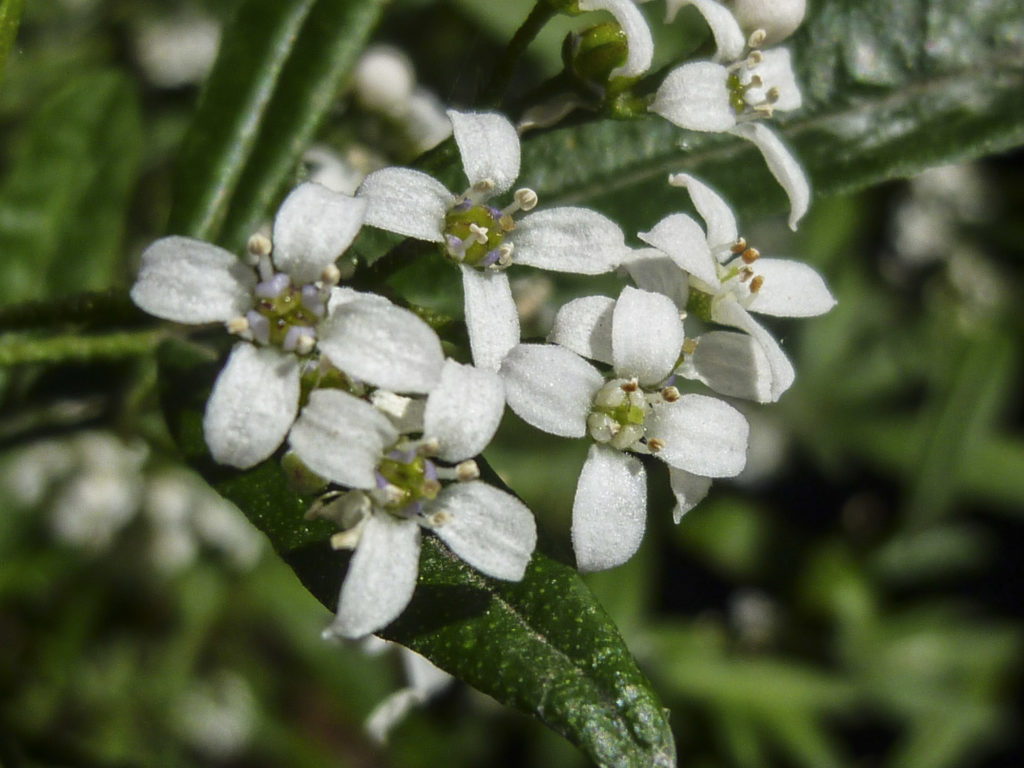
An erect and strong shrub to 2 metres tall. It has a very large, mainly coastal distribution, growing from eastern-central Victoria
Lomatia silaifolia
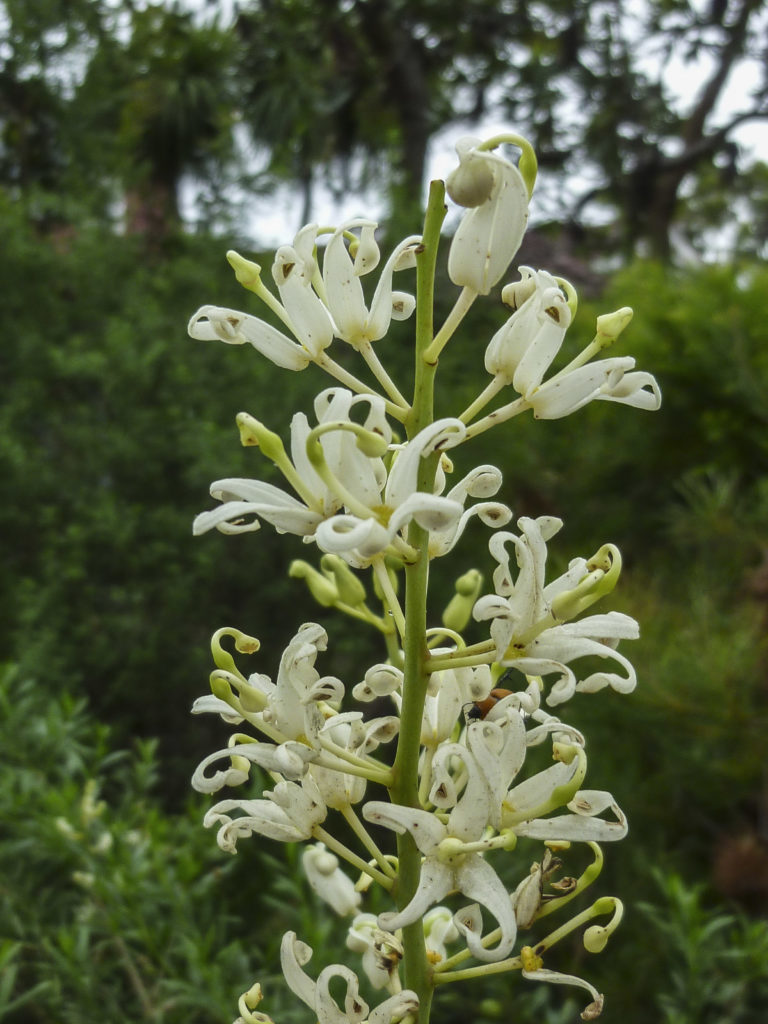
Lomatia silaifolia is found across much of eastern Australia east of the Great Dividing Range as far south as Jervis Bay. It grows as an understory shrub in open forest on sandstone soils. My Lomatia silaifolia plant is now many years old and is growing on a thinnish layer of soil over a clay base. My garden in Sydney’s northern suburbs receives morning and early afternoon sun and my plant is flowering for the first time for many years, due to this year’s ample soil moisture.
Leptospermum ‘Rudolph’
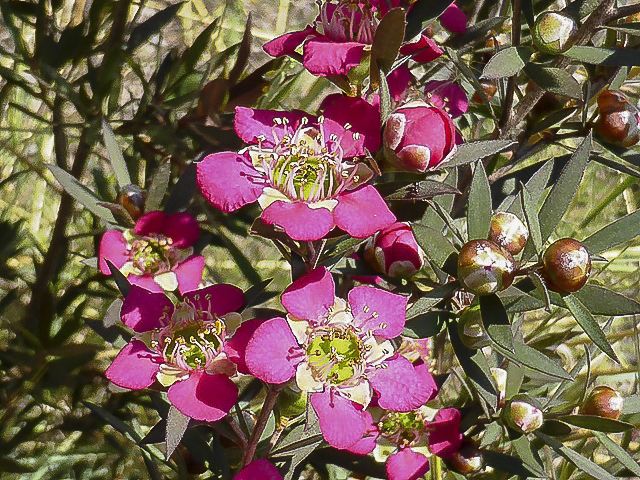
Leptospermum ‘Rudolph’ is a hybrid developed by Bywong Nursery in southern NSW. Its parents are L. spectabile and a burgundy leafed form of L. morrisonii. Leptospermum ‘Rudolph’ is a medium, upright shrub with purplish foliage and large bright red flowers. Both parents have provided this hybrid with flower and foliage colour.
Leptospermum ‘Mesmer Eyes’
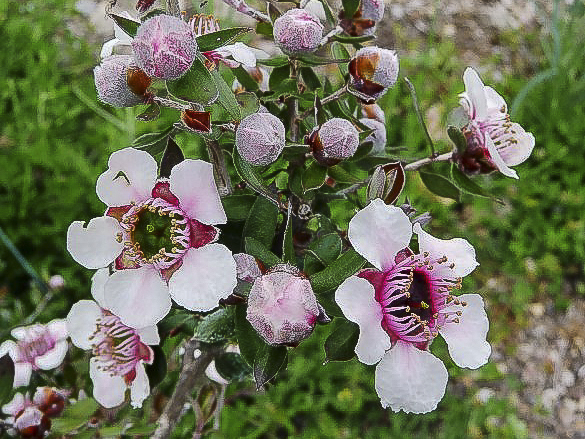
Leptospermum ‘Mesmer Eyes’ was developed in a breeding programme, by Bywong Nursery, from crosses between a form of Leptospermum scoparium, Leptospermum macrocarpum and Leptospermum deuense, a rare New South Wales Tea-tree. Leptospermum ‘Mesmer Eyes’ is a shrub that will reach a height of 1.5 metres with a spread of one metre.
Gaudium laviegatum (syn. Leptospermum laevigatum)
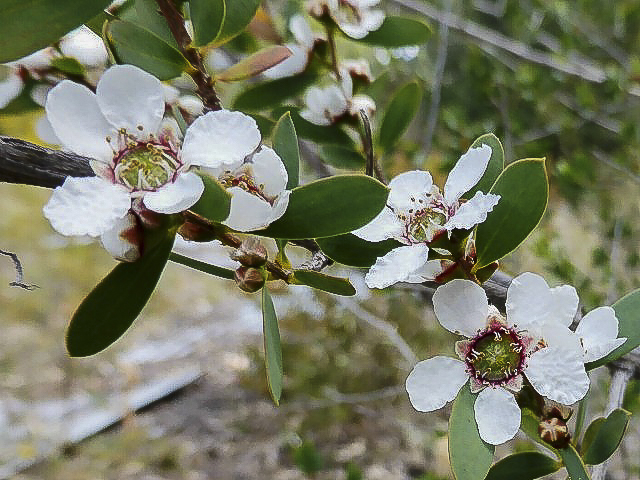
Gaudium laevigatum, known as the Coast Tea Tree, is a medium to tall shrub or small tree reaching a height of eight metres. The trunk is often gnarled, the bark flaky and shed in strips. Leaves are lanceolate, grey-green to green with a sharp point. The flowers are two centimetres across, white, conspicuous and appear from August to October.
Leptospermum ‘Aphrodite’
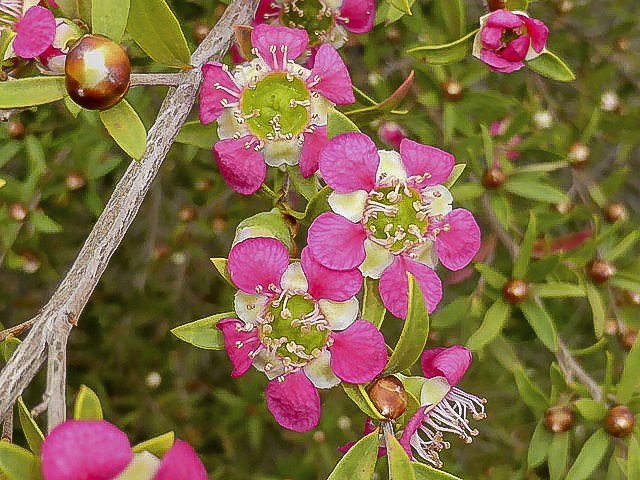
Leptospermum ‘Aphrodite’ is a medium to tall shrub that reaches a height of at least two metres in our cold climate garden and develops into a dense shrub. Foliage is lush green. In spring the branches become covered with bright pink flowers. A wide range of native insects are attracted to the flowers. Light pruning after flowering is appreciated.
Leionema elatius
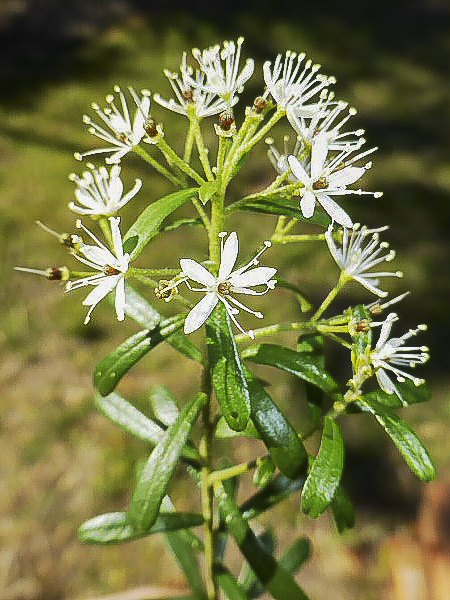
Leionema elatius is a small to medium shrub. Leaves are small, about two centimetres long and strongly aromatic when crushed. This is a characteristic of the genus. The upper surface is smooth, glossy and the midrib is prominent on the undersurface.
Lambertia formosa
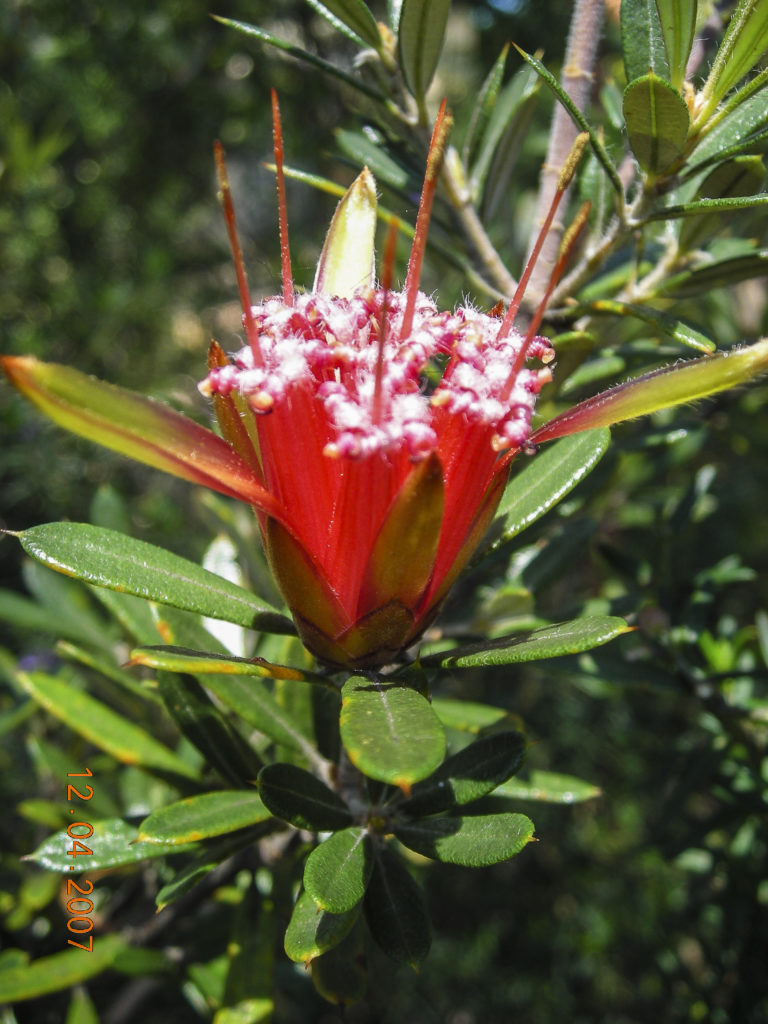
Lambertia formosa is a widespread plant of the Sydney Region. I planted this plant about 25 years ago in my garden in the northern Sydney suburb of Westleigh. It is now approximately 1.6 metres high with multiple branches coming from the base. It is still growing well even though it now receives only dappled morning light and some full late afternoon sun. As well, the soil is much drier very different to the full sun conditions it enjoyed in its early years.
Kunzea axillaris
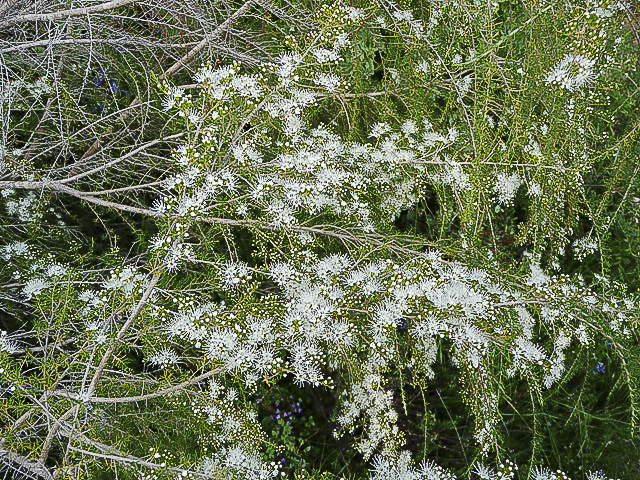
Kunzea axillaris is a tall shrub or small tree that may reach a height of eight metres. This would make this Kunzea the tallest species in the world. Branches are pendulous. The small leaves are linear and tightly clustered. White, fluffy flowers are crowded along the stems. In summer plants become covered with blooms. Growth habit, foliage and flowers are attractive features.
Kunzea bracteolata
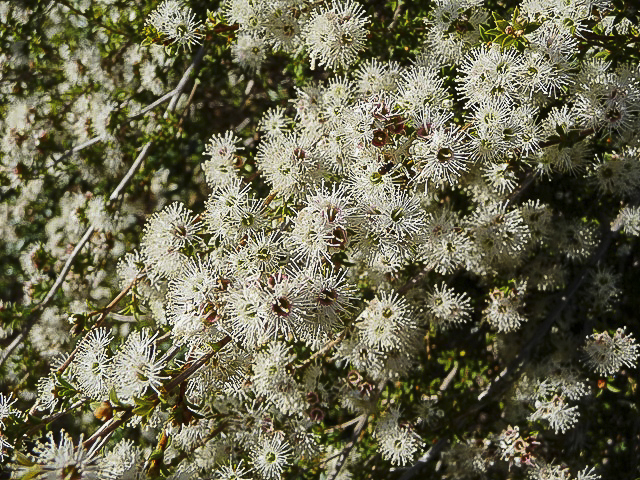
Kunzea bracteolata is a small shrub that reaches a height of one metre in our garden. The spreading branches reach a length of two metres. Leaves are small, elliptical and bright green. Fluffy flowers cover the branches in mid to late spring. In warmer climates flowering would probably occur earlier.
Kunzea ambigua

Kunzea ambigua is known as the Tick Bush or White Kunzea and is usually an erect or spreading shrub that, in our cold climate garden reaches a height of three metres but can reach 4 or 5 in the wild. Small aromatic leaves are tightly clustered along the branches. White fluffy flowers cover plants in late spring and early summer.
Jacksonia scoparia

Jacksonia scoparia, Dogwood, is a tall shrub or small tree reaching a height of 5 metres, but often smaller. The trunk is dark grey and furrowed. Branches are pendulous and the leaves are usually reduced to scales although young plants and regrowth after plant damage will produce true leaves. In spring and early summer plants produce masses of yellow pea flowers that are sweetly scented and attract butterflies.
Isopogon formosus
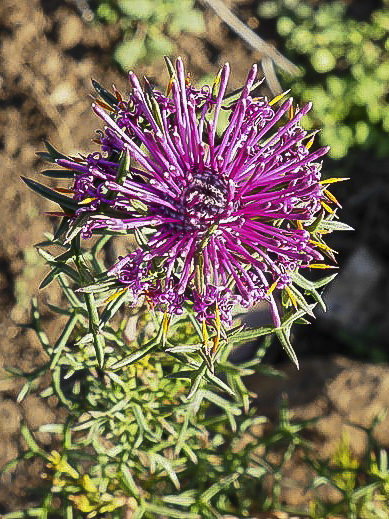
Isopogon formosus is a small, erect or spreading shrub that may reach a height of 1.5 metres and is known as the Rose Cone-flower. The young growth is silky and sometimes reddish. Adult leaves are green to reddish-green, very divided and each segment has a sharp point.
Isopogon anemonifolius
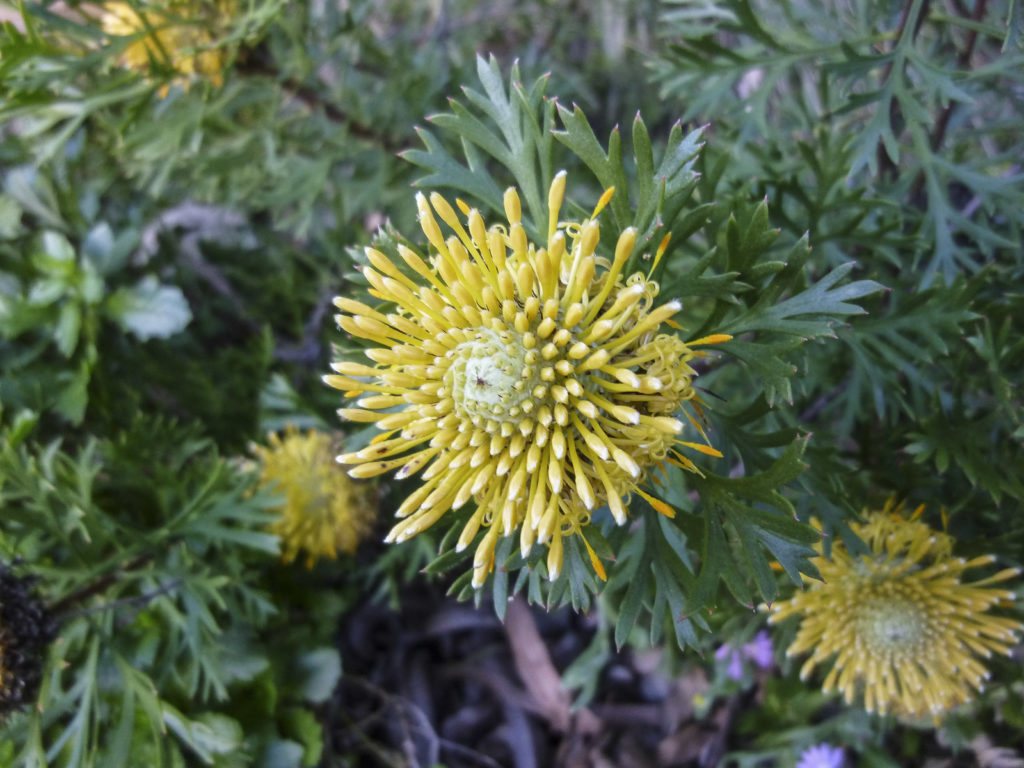
Isopogon anemonifolius is a widespread shrub that occurs in Queensland and along the Coast and Tablelands of New South Wales.
Indigofera australis

Indigofera australis is a plant referred to by many online sites and gardening books as “underutilised”. It definitely should be grown more often as Indigofera australis has very attractive flowers and beautiful coloured foliage. It is an open erect spreading shrub, widespread in southern Australia from the south-east of Western Australia to north-east Queensland.
Hypocalymma angustifolium
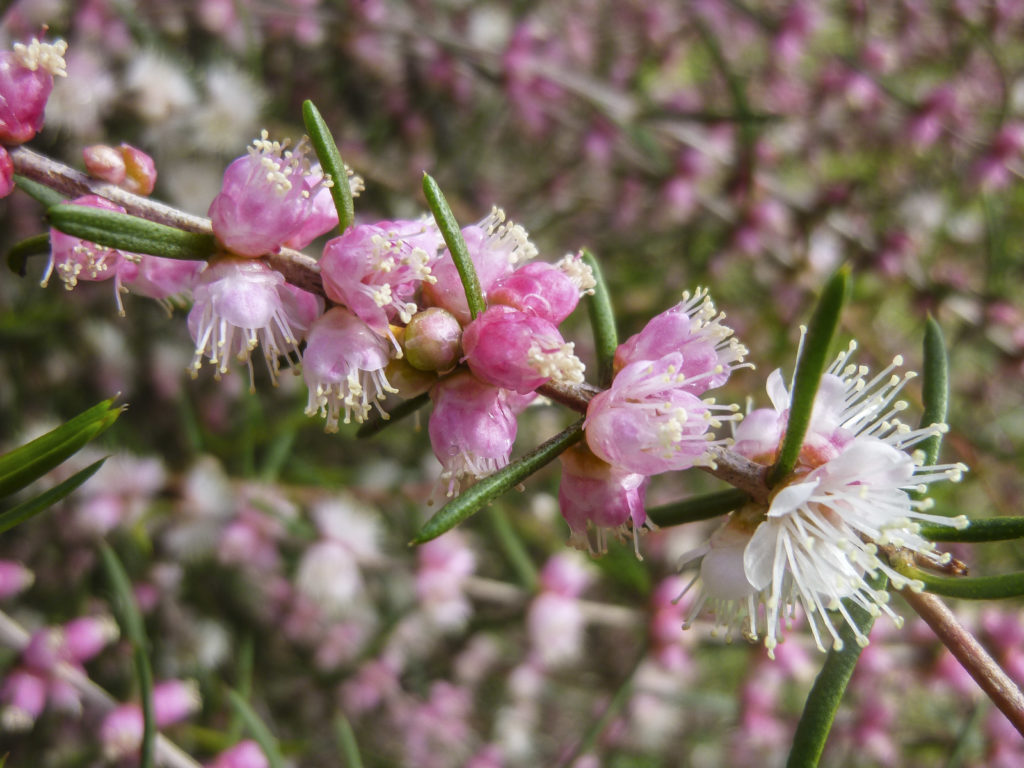
Hypocalymma is a small genus of about 29 species, all of which occur naturally only in south Western Australia. Hypocalymma angustifolium is the best known members of the genus and has been widely cultivated over a long time. It is an erect shrub with narrow leaves about 25 mm long. The flowers are white or pink. See attached photos of both these forms.
Hovea lanceolata
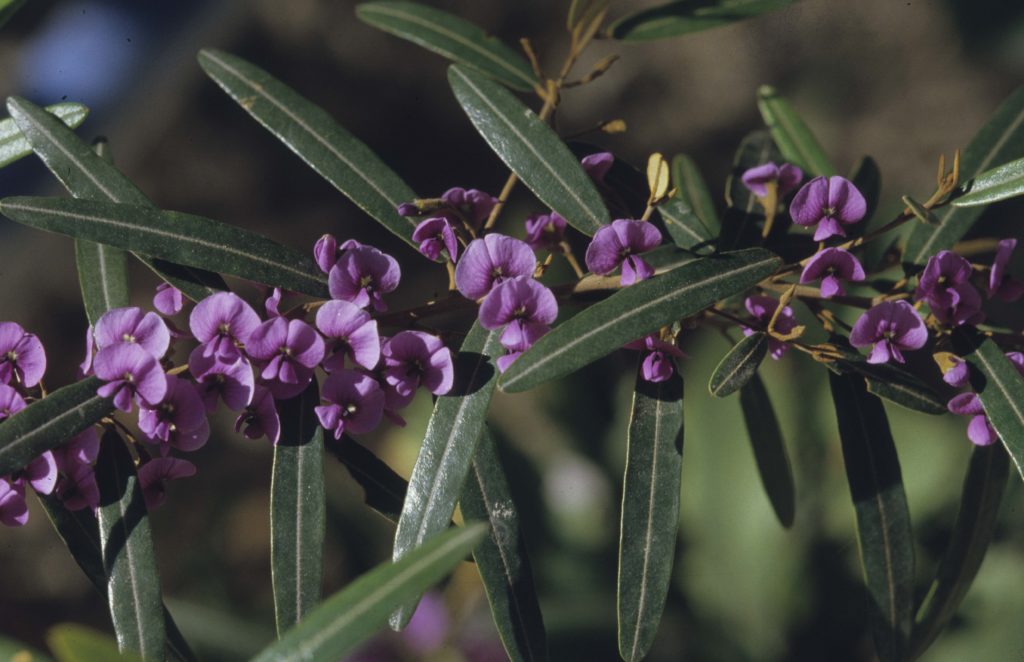
Hovea lanceolata is a member of the Fabaceae family and develops into an upright, small to medium shrub. Leaves are up eight centimetres long, oblong to elliptical, deep green above and greyish-brown with rusty hairs beneath. The pea shaped flowers are bluish purple and borne in axillary racemes. During late winter to early spring the flowers are both conspicuous and profuse.
Hakea sericea
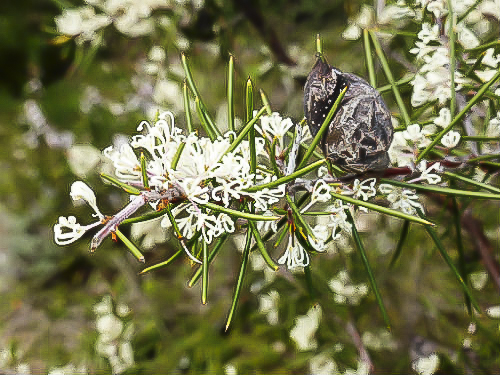
Hakea sericea, Silky Hakea or Needlebush is a tall shrub reaching a height of seven metres. Juvenile growth is light green with silky hairs hence the former common name. There is nothing silky about the adult foliage. Leaves are stiff, linear, narrow, dark green and crowned with an extremely sharp point (hence the latter common name).
Hakea pycnoneura
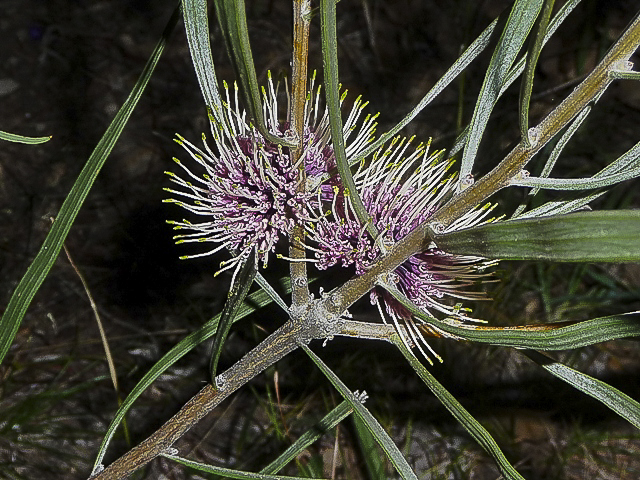
Hakea pycnoneura is a rounded shrub that reaches a height of two metres by the same width. The globular flower clusters are carried in leaf axils. Purplish buds open with purplish-pink perianths and long cream styles. Blooms are very fragrant.
Hakea purpurea
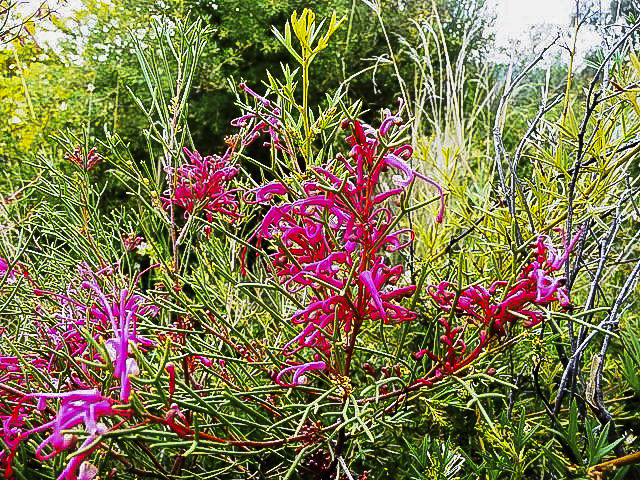
Hakea purpurea is a rigid, upright shrub that may reach a height of 3 metres. Flowering extends from winter to spring. Red blooms are carried in clusters in the leaf axils. The majority of leaves are either forked or divided into three segments. A few leaves may be entire. All leaves have pointed tips and are up to ten centimetres long.
Hakea platysperma

Hakea platysperma, the Cricket Ball Hakea, is a single stemmed spreading shrub reaching a height of 2-3 metres. The leaves are thick, circular in cross section (terete), up to 12 centimetres long, rigid and sharply pointed. Blooms are cream or slightly reddish, said to be sweetly perfumed and with long, yellowish styles.
